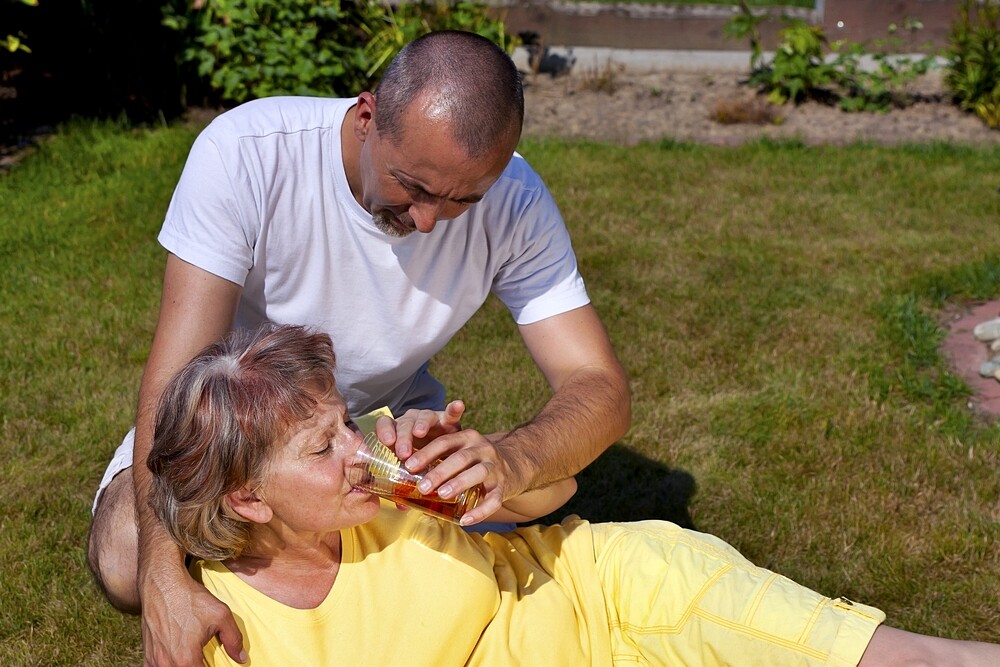Heat stroke can occur if you are exposed to high temperatures for too long. You can find out here how to recognize heat stroke and what helps in such cases.
Caution, danger to life: What is heat stroke?
A heat stroke (hyperthermia syndrome) is a form of heat exhaustion and can occur if you are exposed to great heat for a longer period of time or too quickly. Physical exertion can also play a role. The most obvious symptom is a body temperature above 40 degrees. During heat stroke, the body can no longer produce sweat to cool down – this is life-threatening! Therefore, if heat stroke is suspected, the emergency doctor should be called immediately.
Who is most likely to suffer heat stroke?
Basically everyone can suffer heat stroke, but the following groups are particularly susceptible:
- Babies and toddlers,
- Chronically ill,
- Elderly people,
- People who are not used to heat.
These symptoms occur during heat stroke
Heat stroke causes similar symptoms to sunstroke. However, unlike sunstroke, heat stroke symptoms occur while you are still in the sun / heat. A sunstroke often causes the first symptoms hours later. The following indications point to heat stroke:
- Fever above 40 degrees, generally hot, reddened and dry skin,
- Headache,
- Nausea and vomiting,
- Dizziness,
- Cramps,
- Disturbances of consciousness to the point of unconsciousness,
- Circulatory collapse to the point of organ failure,
- Additionally with babies: refusal to eat, shrill screaming or apathy, fast pulse.
What to do if you have heatstroke?
If someone shows signs of heat stroke, the first thing to do is to bring them out of the sun. Further first aid tips before the doctor arrives:
- The affected person should rest in as cool and shady a place as possible with his legs elevated and his head slightly raised.
- Clothing that is too tight is better loosened.
- Cold cloths cool the body down – they should be placed mainly on the head and neck, but also on the arms and legs.
- As long as the patient is conscious and not nauseous, it is important that he/she drinks plenty of fluids (preferably water).
- Observe the patient closely – pay particular attention to breathing and pulse – and under no circumstances leave him alone. He could lose consciousness at any time.
How do I protect myself from heat stroke?
In addition to heat stroke, sunstroke or sunburn can also occur if you expose yourself to the sun without protection. With these tips you can protect yourself against it:
- Never go outside without a hat (preferably with neck protection),
- Avoid midday sun,
- Apply the right cream (you can find out everything about the right sun protection factor here),
- Drink a lot (at least two liters, better three in hot weather),
- Do not engage in physically strenuous activities in very hot weather.

